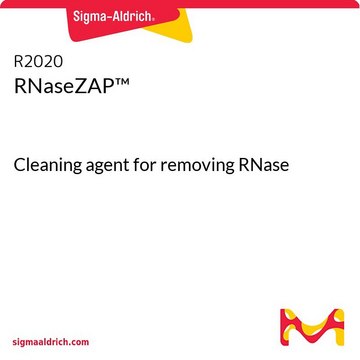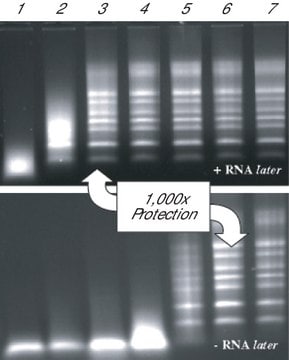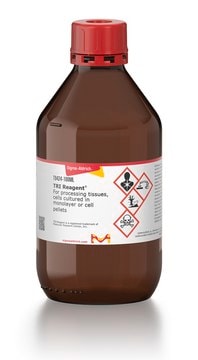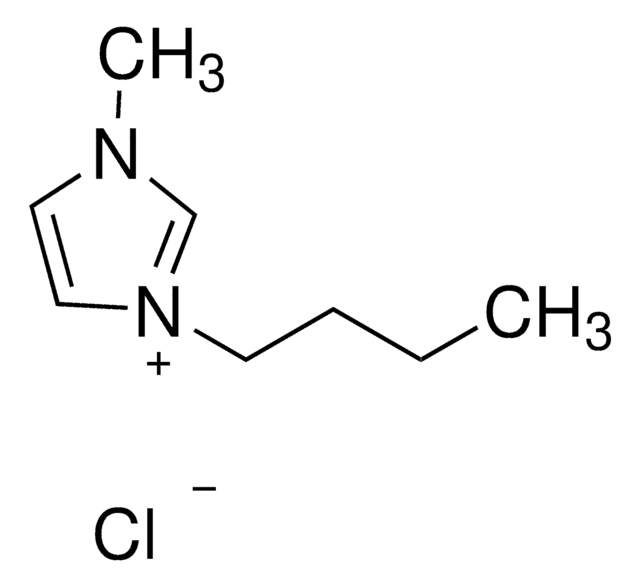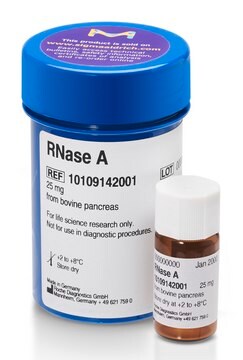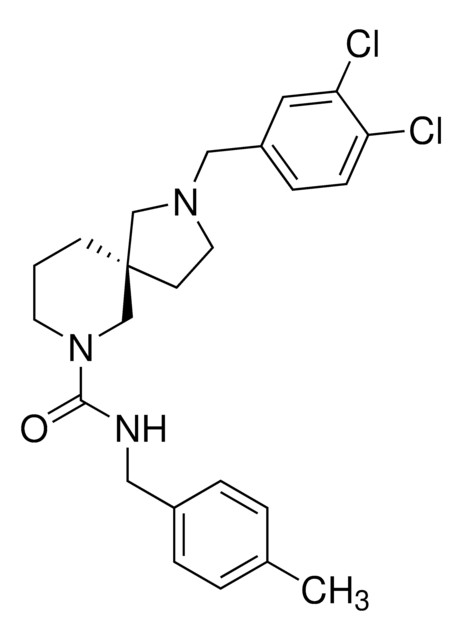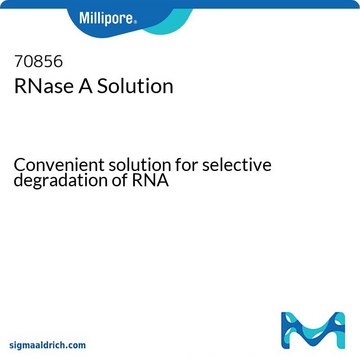Wszystkie zdjęcia(1)
Key Documents
83931
RNase AWAY®
decontamination reagent for RNase
Synonim(y):
Surface Decontaminant
Zaloguj sięWyświetlanie cen organizacyjnych i kontraktowych
About This Item
Polecane produkty
Opis ogólny
RNase AWAY® is a ready-to-use surfactant that removes RNA and RNases from lab equipment. Suitable for PCR equipment, plastic, glassware, and stainless steel lab surfaces.
Zastosowanie
RNase AWAY® has been used:
- in flow cytometry analysis
- to sterilize coated microstir bars for the formation of colloidal emulsion
- to remove RNAse from biosafety cabinet and lab equipment
- as a chemical to analyse the dynamic transcriptional and epigenetic remodeling during astrogliogenesis
Przestroga
Gloves should be worn when handling this product. RNase Decontamination Reagent is alkaline in nature and will cause irritation if prolonged contact with the skin is allowed. In case of contact with eyes, immediately flush with water for fifteen minutes and contact a physician. If swallowed, do not induce vomiting. Give plenty of water and contact a physician immediately.
Inne uwagi
Do not use RNase Decontamination Reagent on aluminium, soft metal or gaskets and seals. This product is not intended as reactant. Do not add to reaction.
Informacje prawne
AWAY is a registered trademark of Molecular BioProducts, Inc.
RNase AWAY is a registered trademark of Molecular Bio-Products, Inc.
This page may contain text that has been machine translated.
produkt powiązany
Numer produktu
Opis
Cennik
Hasło ostrzegawcze
Warning
Zwroty wskazujące rodzaj zagrożenia
Zwroty wskazujące środki ostrożności
Klasyfikacja zagrożeń
Eye Irrit. 2 - Met. Corr. 1 - Skin Irrit. 2
Kod klasy składowania
8B - Non-combustible corrosive hazardous materials
Klasa zagrożenia wodnego (WGK)
nwg
Temperatura zapłonu (°F)
Not applicable
Temperatura zapłonu (°C)
Not applicable
Środki ochrony indywidualnej
Eyeshields, Gloves
Certyfikaty analizy (CoA)
Poszukaj Certyfikaty analizy (CoA), wpisując numer partii/serii produktów. Numery serii i partii można znaleźć na etykiecie produktu po słowach „seria” lub „partia”.
Masz już ten produkt?
Dokumenty związane z niedawno zakupionymi produktami zostały zamieszczone w Bibliotece dokumentów.
Klienci oglądali również te produkty
CRISPR-Cas9 genome engineering of primary CD4+ T cells for the interrogation of HIV-host factor interactions
Hultquist JF, et al.
Nature Protocols, 1-1 (2018)
Nethaji Thiyagarajan et al.
The FEBS journal, 278(3), 541-549 (2011-01-06)
Molecular probes are useful for both studying and controlling the functions of enzymes and other proteins. The most useful probes have high affinity for their target, along with small size and resistance to degradation. Here, we report on new surrogates
In vitro Generation of CRISPR-Cas9 Complexes with Covalently Bound Repair Templates for Genome Editing in Mammalian Cells
Savic N, et al.
Bio-protocol, 9(1) (2019)
Loss of MiR-664 expression enhances cutaneous malignant melanoma proliferation by upregulating PLP2
Ding Z, et al.
Medicine, 94(33) (2015)
Máire F Quigley et al.
Current protocols in immunology, Chapter 10, Unit10-Unit10 (2011-08-03)
A detailed knowledge of the principles that guide clonal selection within the memory and effector T cell pools is essential to further our understanding of the factors that influence effective T cell-mediated immunity and has direct implications for the rational
Nasz zespół naukowców ma doświadczenie we wszystkich obszarach badań, w tym w naukach przyrodniczych, materiałoznawstwie, syntezie chemicznej, chromatografii, analityce i wielu innych dziedzinach.
Skontaktuj się z zespołem ds. pomocy technicznej